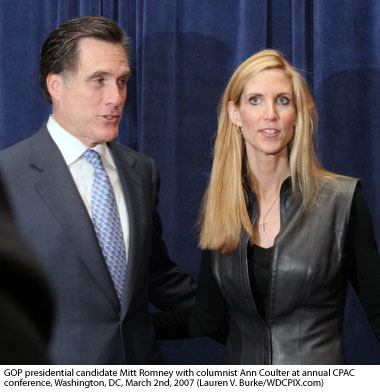Kos has knocked both candidates on this. Here are both headlines:
Hillary unable to say homosexuality isn’t “immoral”
Obama also can’t say: “Homosexuality is not immoral”
Hillary said “I’m going to leave that to others to conclude,” and while Obama answered “no,” he did so through his press guy, and not in person.
I don’t think it’s important for Democratic candidates to believe homosexuality is “moral.” I think it is more important for Democratic candidates to believe in full civil rights for gays and lesbians.
It’s like Dan Savage said:
No one has to like homos. You can sign off on full civil rights for gays and lesbians without having to think we’re nifty or be all that comfortable with the idea of sharing a locker room with us. (Hell, I’m sometimes not comfortable sharing a locker room with other gay men.) The gay and lesbian civil rights movement would make more strides if we could separate the issue of liking us from the issue of not discriminating against us.
[…]
No one wants to change your mind about homosexuality. You can think we’re naughty, you can think we’re sinful. And you know what? You can sign off on granting us our full civil rights, tolerate our living openly, marrying, having families—and go right on hating us! Heck, you can go right on trying to talk us out of being gay.
So, I think the question put to both Obama and Clinton is a poor one, not to mention irrelevant.

